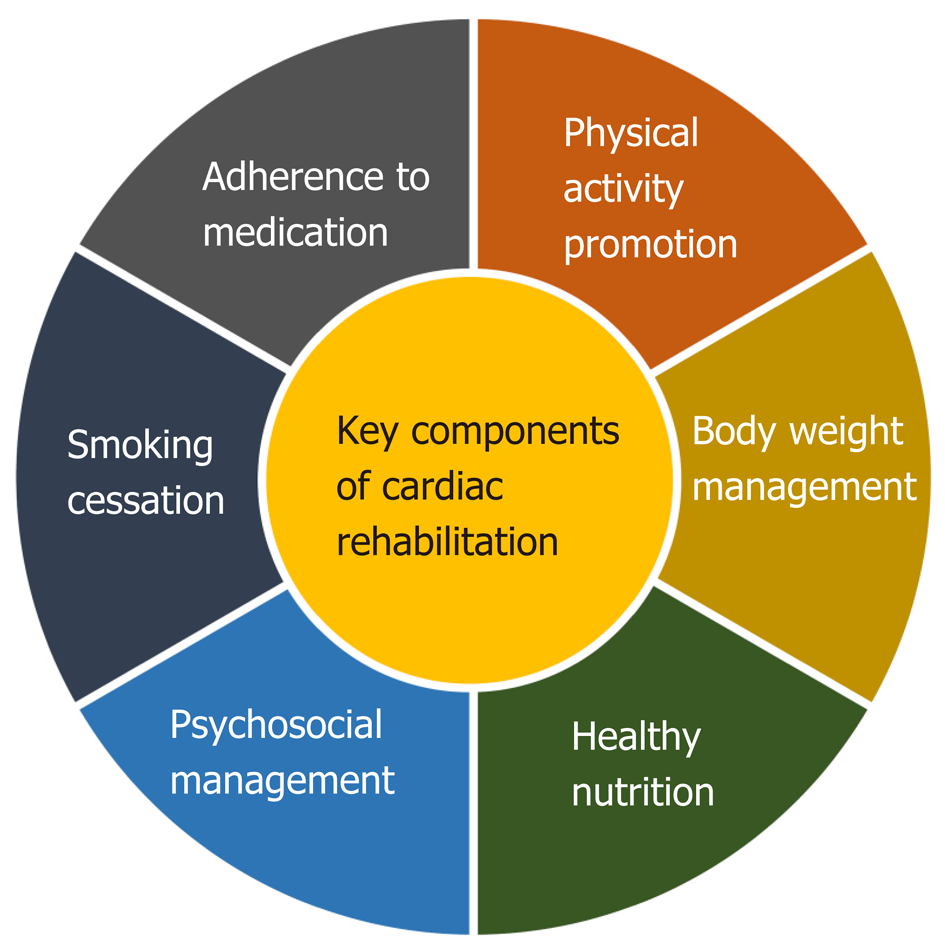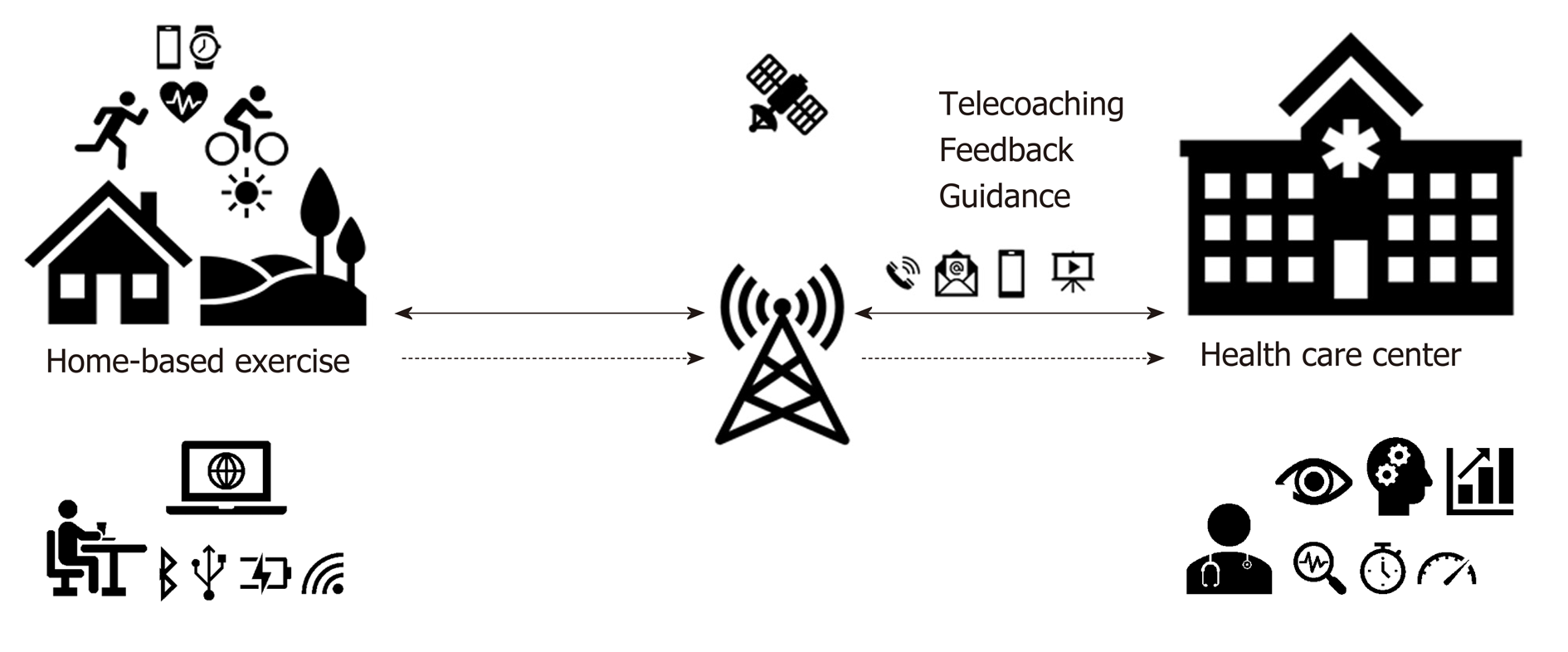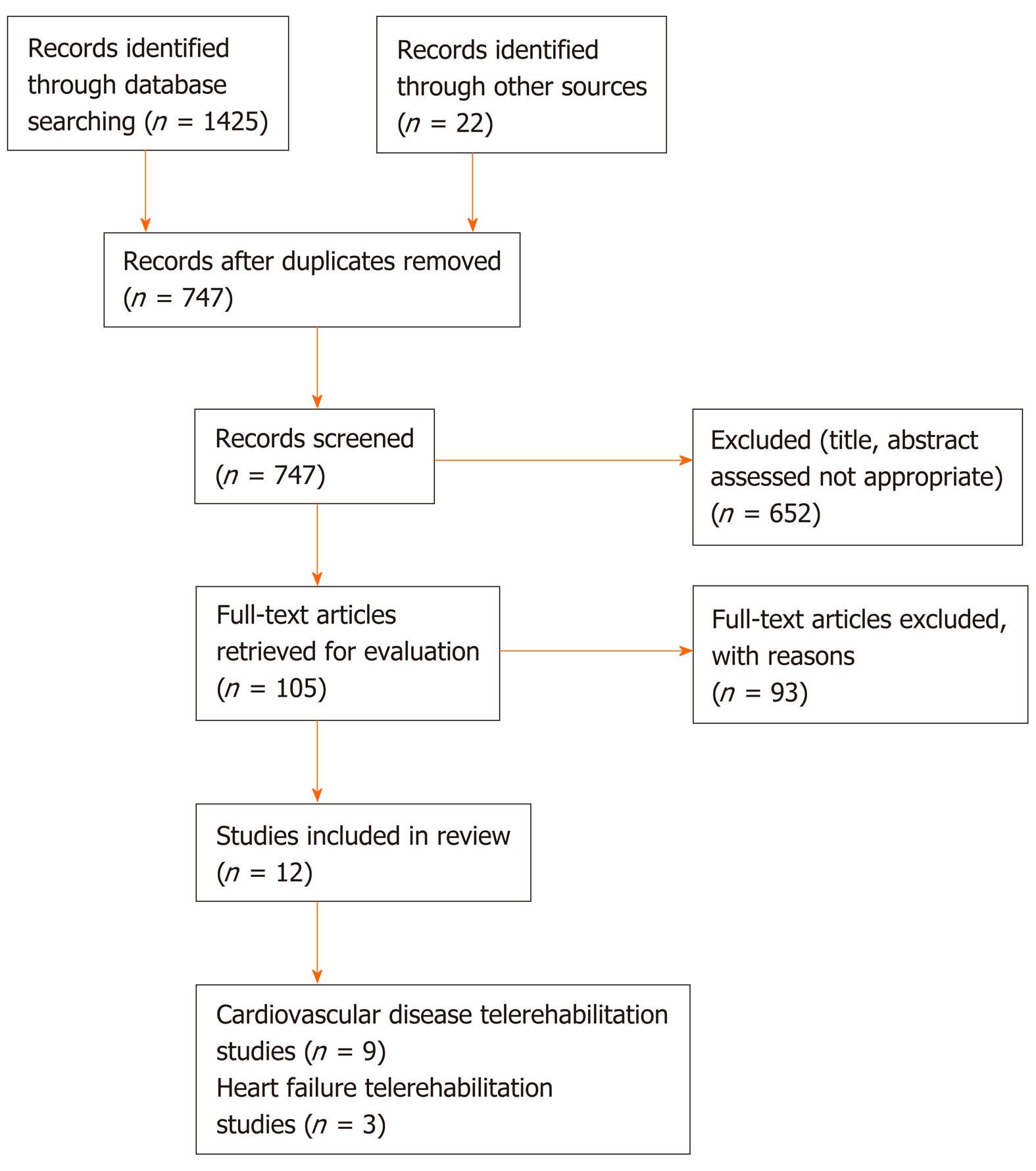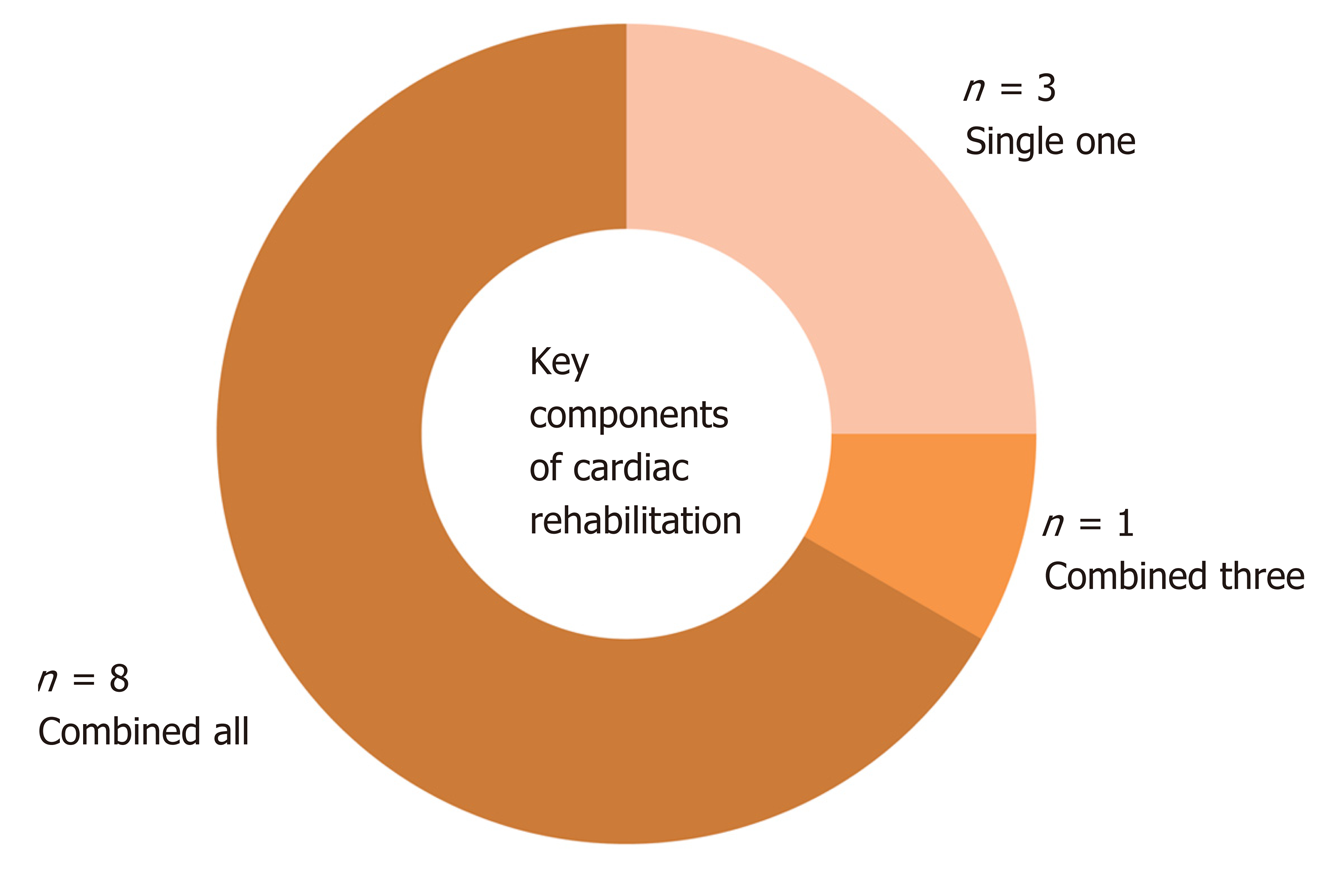Copyright
©The Author(s) 2020.
World J Clin Cases. May 26, 2020; 8(10): 1818-1831
Published online May 26, 2020. doi: 10.12998/wjcc.v8.i10.1818
Published online May 26, 2020. doi: 10.12998/wjcc.v8.i10.1818
Figure 1 Key preventive components of cardiac rehabilitation.
Providing secondary prevention programs of cardiac rehabilitation supports patients in setting goals of increasing levels of physical activity, healthy nutrition, optimal adherence to medication, bodyweight management, smoking cessation, and optimal psychosocial well-being, thereby helping them reduce their risk of a future cardiovascular disease event.
Figure 2 Scheme of remotely monitored telerehabilitation.
The diagram shows remotely monitored home-based exercises from the health care center through telemonitoring and telecoaching. Images and icons are depicted as telerehabilitation form using telemedicine technologies.
Figure 3 Flowchart of the publication selection process.
Figure 4 Use of key components in telerehabilitation interventions.
The number of studies that evaluated one, three, or all key preventive components of cardiac rehabilitation are shown. Blue represents the use of a single component (physical activity); Red represents the combination of three components; Green represents the use of all preventive components in the telerehabilitation intervention.
- Citation: Batalik L, Filakova K, Batalikova K, Dosbaba F. Remotely monitored telerehabilitation for cardiac patients: A review of the current situation. World J Clin Cases 2020; 8(10): 1818-1831
- URL: https://www.wjgnet.com/2307-8960/full/v8/i10/1818.htm
- DOI: https://dx.doi.org/10.12998/wjcc.v8.i10.1818












